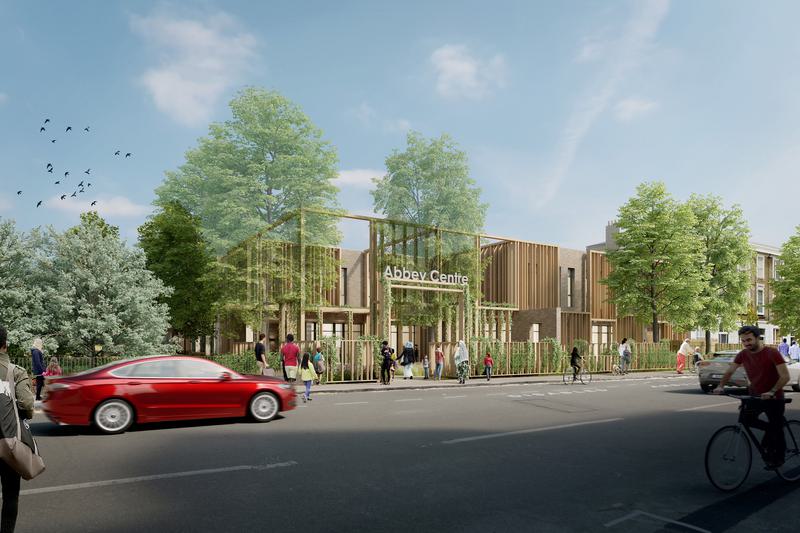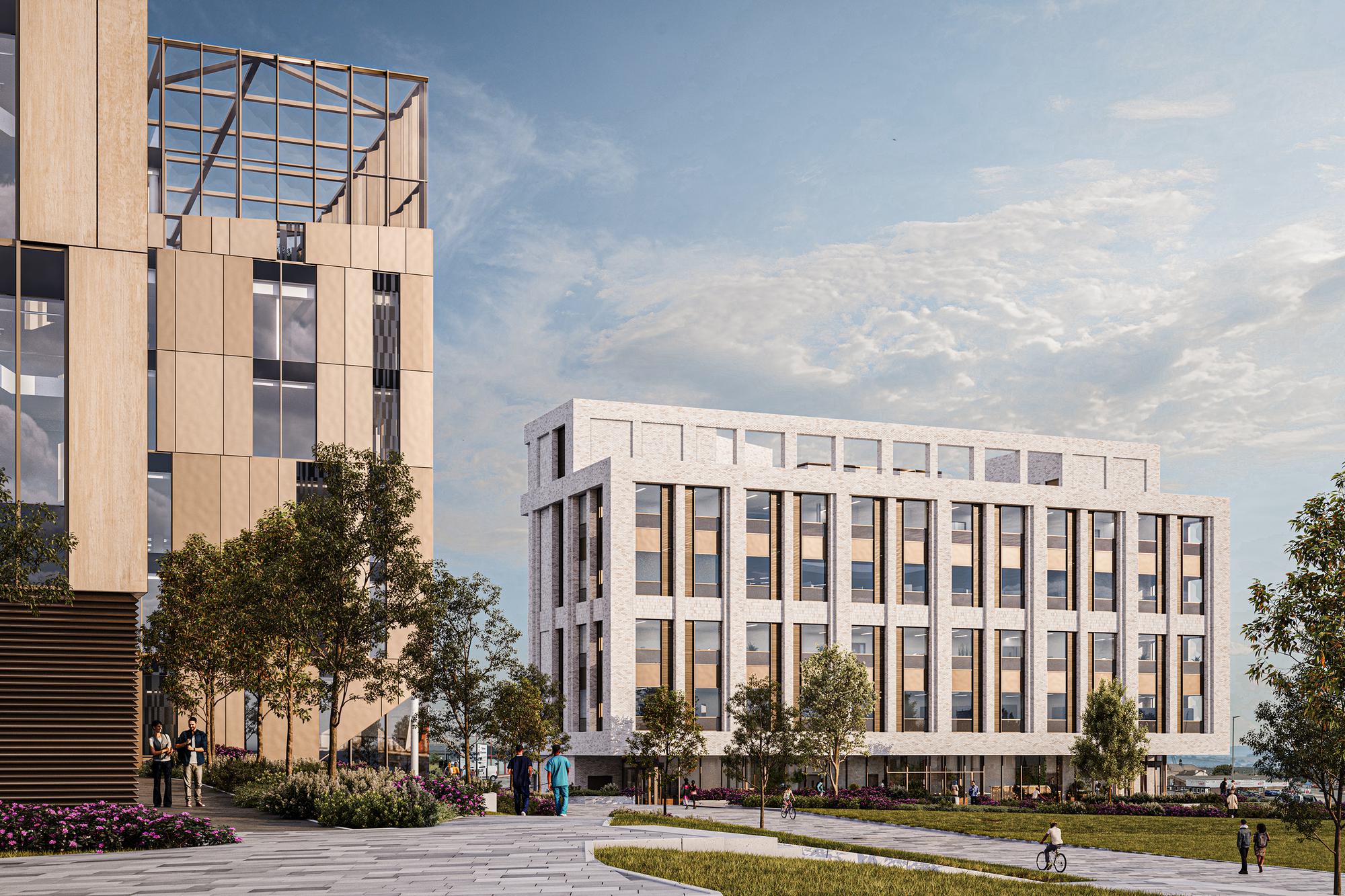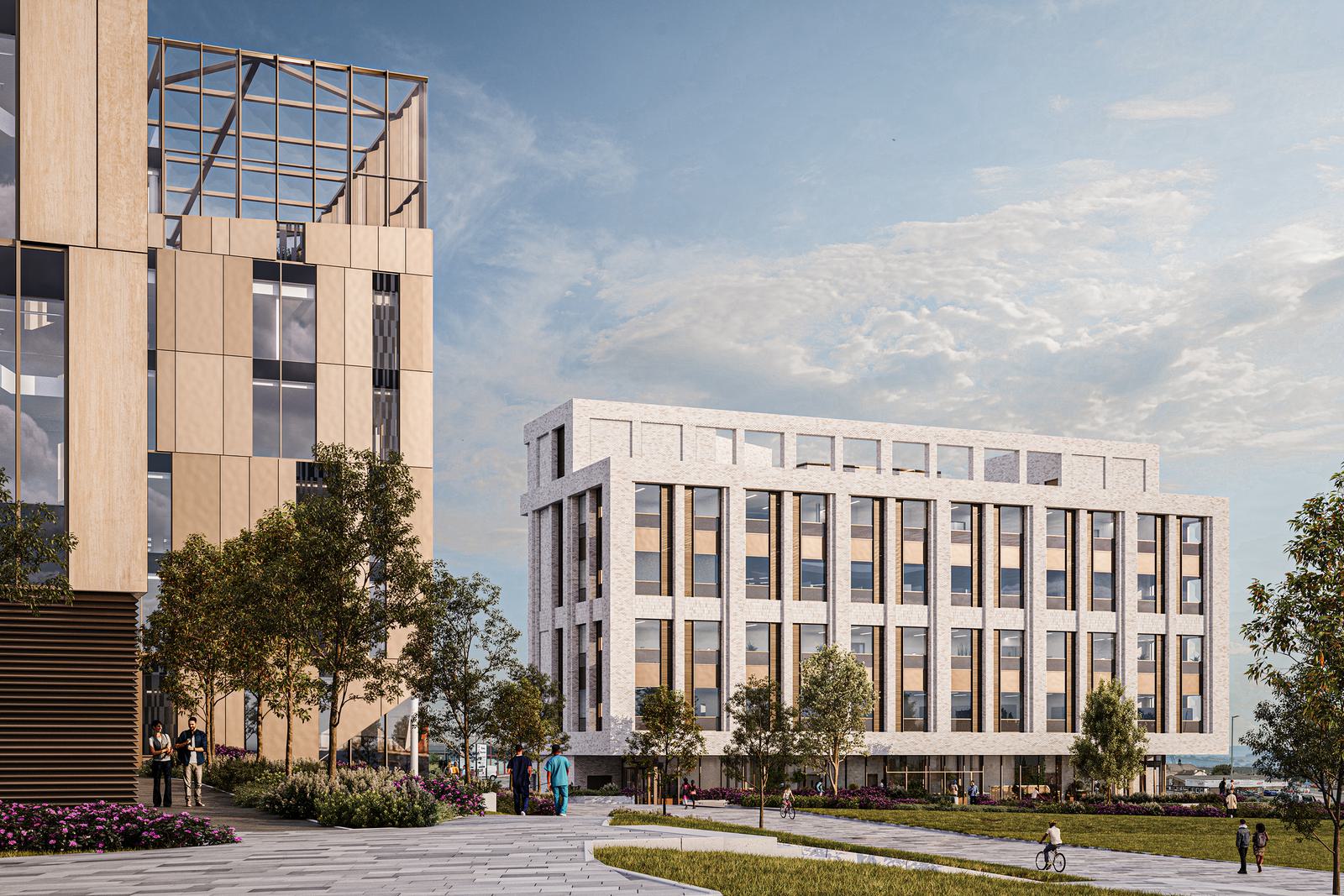
Thought Leadership
Creating healthy neighbourhoods with a focus on people and place
by AHR
Our population is growing and people are living longer, increasing the demand on our already overstretched acute hospital sites.
It means we need a new approach and different thinking to how we deliver healthcare, one that is accessible and affordable.
One way to do this is to move non-urgent critical care off acute sites to deliver community healthcare services closer to where people live and work, so they can get the care they need where and when they need it.
Although there are regional differences across the UK, they all share the same goal of improving health and wellbeing in all communities, no matter where you live. Common themes across all proposed strategies include prevention, early intervention, seamless services, and a focus on partnerships with individuals, communities, organisations, and the private sector including developers.
Community engagement
Where communities are involved in designing, delivering, and evaluating health services, those services are more likely to meet the needs of local people and be successful. It can also help destigmatise accessing healthcare services through the cocreation of environments that people feel more comfortable to be in.
Health Creation is the process through which individuals and communities gain a sense of purpose, hope, mastery and control over their own lives and immediate environment; when this happens their health and wellbeing is enhanced.”
The Health Creation Alliance
The Health Creation Alliance (THCA) [1]did a study for NHS Property Services to find out what people from underserved communities really want from NHS buildings, besides treatments and medical services.
Here’s what they found:
- People want spaces where they can get peer support and join community-led activities
- They want multi-purpose buildings that can be used by people from all walks of life
- The location of the buildings is important, and they should be easy to get to and have affordable parking
- The buildings should be accessible to older people and people with disabilities
- People want welcoming, calming, and sensory environments that are low-stress
- They want the facilities to be managed by people who have been trained to be inclusive and welcoming
- People want to have some ownership or control over the buildings and how they are run
Public Health Wales is also using partnerships and engagement in their approach to delivering community health[2] with a focus on four main types of engagement: public information and general consultation; user feedback; coproduction; and community empowerment. They are seeking to amplify “the voice of the people we want to work with and for.”
Our project, Abbey Area Community Health hub, is an example of public involvement. It brings together community health services into one building in a new park. It’s a place for residents to socialise and support their health and wellbeing. The hub hosts a range of educational, recreational, cultural, and social opportunities for the community.
Central to the success of the scheme was the principle that the project was community-led and community-owned. The two new community gardens that will be managed and maintained by the local community cement this notion. These gardens have been designed to make the centre as open and inviting as possible, a community centre is located on the ground floor with GP services provide above it at first floor level.
 Abbey Area Community Health Hub
Abbey Area Community Health HubPlace-based approaches
Everyone’s health needs are different. A place-based approach to health recognises this and takes a holistic view, considering the social, economic, and environmental factors that impact our wellbeing. It involves working with communities to identify their needs and develop tailored solutions.
In 2019, NHS England released 10 principles for healthy placemaking [3], including creating compact neighbourhoods, maximising active travel, and fostering healthy homes and buildings.
Similarly, one of Public Health Wales’ aims for 2035 is to have “transport, housing and planned developments that support people, families and communities to live healthier lives.” [4] In Scotland, the Government have “A More Active Scotland” strategy [5] using physical activity to contribute towards improving health outcomes in the country.
These principles overlap with the concept of a 15-minute neighbourhood, where residents can access all their daily needs within a short walk, cycle, or public transport ride.
Introducing more public health services to our high streets and away from acute sites, not only makes it easier for people to access services but can aid the regeneration and revitalisation of town centres which have been struggling with high rates of vacant units and low footfall.
By investing in accessible and relevant infrastructure and services that promote physical and mental wellbeing, place-based strategies can help to create healthier places to live, work, and play.
Integrated care
When different health and social care services, as well as other public services, work together, they can provide a seamless and coordinated approach to care which has far reaching improvements in general health and a lower cost base. This means that people can get the care they need more easily, reducing the need for more costly interventions and improving health outcomes. If properly coordinated there is also less duplication and fragmentation of services. All providing better coordinated outcomes for the patient, reducing their stress and anxiety around illness.
This includes community services working closely with other parts of the health and care system, such as GPs, hospitals, pharmacies, and care homes, to support people with complex health needs who depend on multiple health and social care services to meet those needs.
The Cross Hands Community Health and Wellbeing Centre in Carmarthen is a great example of one of our projects taking this approach. The centre will combine two GP practices, community health services, mental health services and more, right in the heart of the community. Alongside these will be third-sector facilities such as a library, early years centre and police hub. It will provide proactive health management, with the long-term goal of reducing acute care requirements and hospital admissions.
There is also an increasing focus on introducing more Community Diagnostic Centres (CDC) within communities, coupled with more capacity within GP surgeries, the aim is the delivery of inexpensive preventative care and reducing the need for more complex and expensive treatment. This approach keeps people well (and active) for longer, thereby reducing the pressure on acute services. It can help increase the capacity of existing hospitals to deal with waiting lists and backlogs, as well as the expansion of specialist and urgent services, without the need for expensive investment in a larger estate and workforce.
Working with the University of Huddersfield we have been implementing this strategy through the development of a sophisticated masterplan for the National Health Innovation Campus, which includes the Daphne Steele Building and Southgate Building 2 projects. This is a 2.67-hectare site in the heart of Huddersfield town centre near to the train station and the retail district features a CDC right at the heart of the community that will be accessible for the local population.
The impact on place and community care
As high streets face challenges, the NHS has an opportunity to become more involved in our communities. By encouraging new uses for vacant shops, such as providing community health services, the NHS can help bring vibrancy back to local neighbourhoods and bring health closer to where people live.
Community health services improve the health of residents through preventative care and chronic disease management. This in turn can lead to a reduction in preventable deaths and illnesses, as well as an improvement in overall quality of life.
The small scale of these services means that they are easily implemented in a wide range of settings to help address health disparities in underserved communities, and in particular, improve access for care for rural residents, and support an aging population. By bringing people together from different backgrounds to access care and support, community health services can also improve social cohesion and wellbeing.
The impact of digital transformation
Technology can help health services work better and faster. This includes using digital tools to remotely monitor and support patients, or to deliver education and training to patients and caregivers.
The University of Salford’s, Salford Social Prescribing tool is designed to help healthcare professionals identify ways to support people’s health and wellbeing in the community. Social prescribing is when patients are referred by their GP or other healthcare provider for non-clinical services to support their health and wellbeing which can include gardening, sports and fitness, and cultural activities. Salford’s tool is digital and helps the healthcare professional in their assessment and to work with the individual on the best plan of support.
We have been supporting Salford with its innovative approach with the development of the School of Health and Society masterplan and campus and their first project, a clinical skills building. One of the main design considerations has been how the whole campus, inside and out, can be used to treat medical conditions without medication (where appropriate). From a community run café, gardens, allotments, and green spaces to studio spaces for art classes and fitness spaces. For example, a dementia clinic could be run as part of an art class or a fitness-based bariatric weight loss clinic could take place in a private space on the roof.
These examples illustrates how buildings still have an important role to play in the transformation which is taking place across the whole NHS, from video appointments, virtual wards and virtual reality to train healthcare professionals to a decentralised system. Ultimately, delivering services in a community setting can help create healthier and more vibrant places to live!
References
1. https://thehealthcreationalliance.org/health-creation/
2. https://phw.nhs.wales/about-us/working-together-for-a-healthier-wales/our-strategic-plan-2023-2026/
3. https://www.england.nhs.uk/pub...
4. https://phw.nhs.wales/about-us/working-together-for-a-healthier-wales/our-strategic-plan-2023-2026/
Share on
Related Articles
Thought Leadership
Supporting the town where our story began
For over 180 years, our architecture and building consultancy services have supported the development and conservation of Huddersfield Town Centre.
Date: 10 Nov 23
by AHR

Project News
Addressing health inequality with Sheffield's three new transformational hubs
Three new transformational primary care hubs in Sheffield have been submitted for planning, providing spaces which better meet the needs of patients and the growing population.
Date: 27 Jul 23
by AHR

Thought Leadership
Why recovery will bring a new healthcare estate
How changing perspectives to our health and wellbeing are front-of-mind for people have impacted demand on healthcare estates and health infrastructure.
Date: 4 Jul 22
by Gareth Banks
Director, Architecture

Project News
How we envision to transform the Five Acres site in Gloucestershire
Planning has now been submitted for our Five Acres project, a new community and leisure centre located in Berry Hill in the Forest of Dean.
Date: 11 Dec 23





